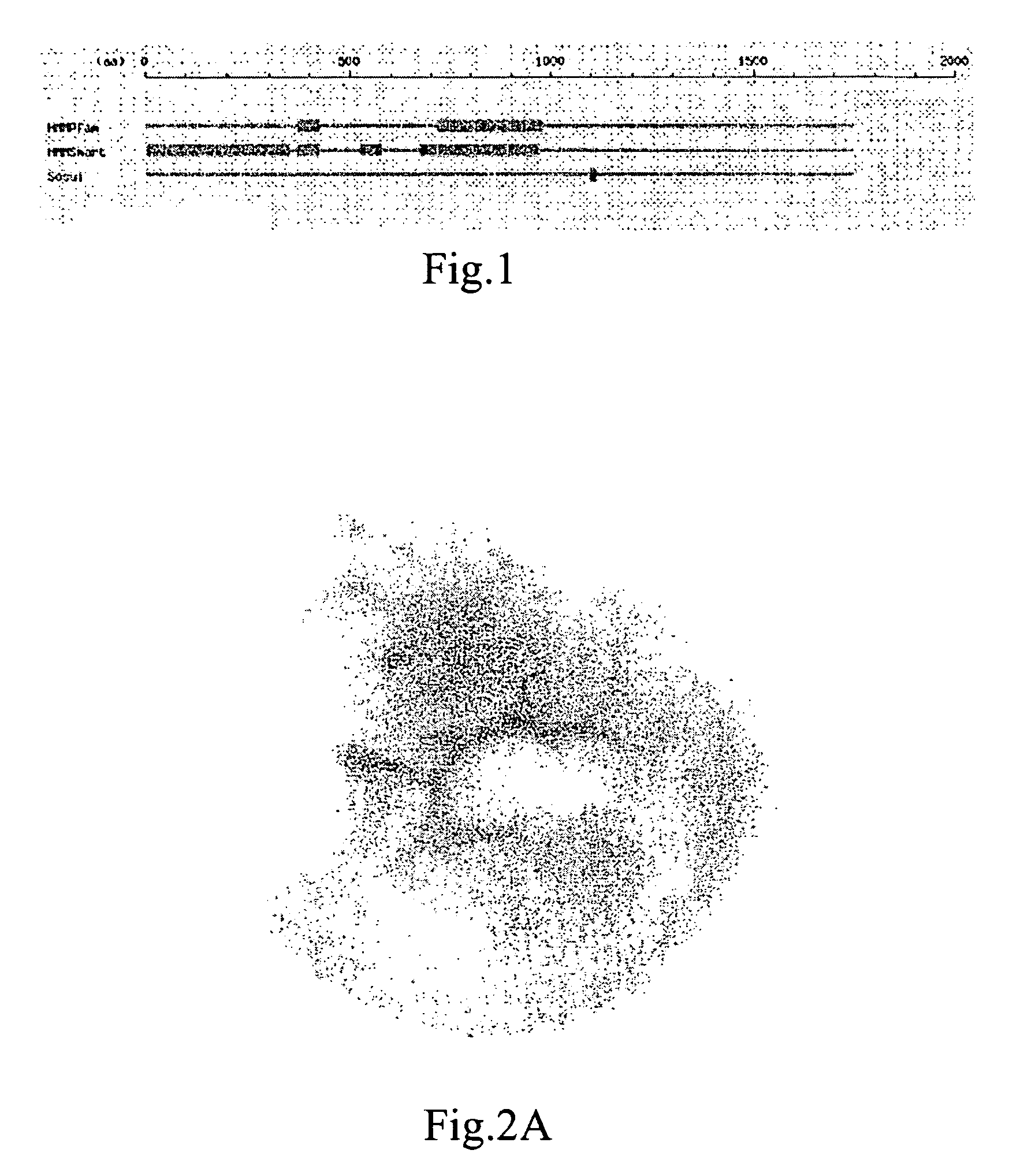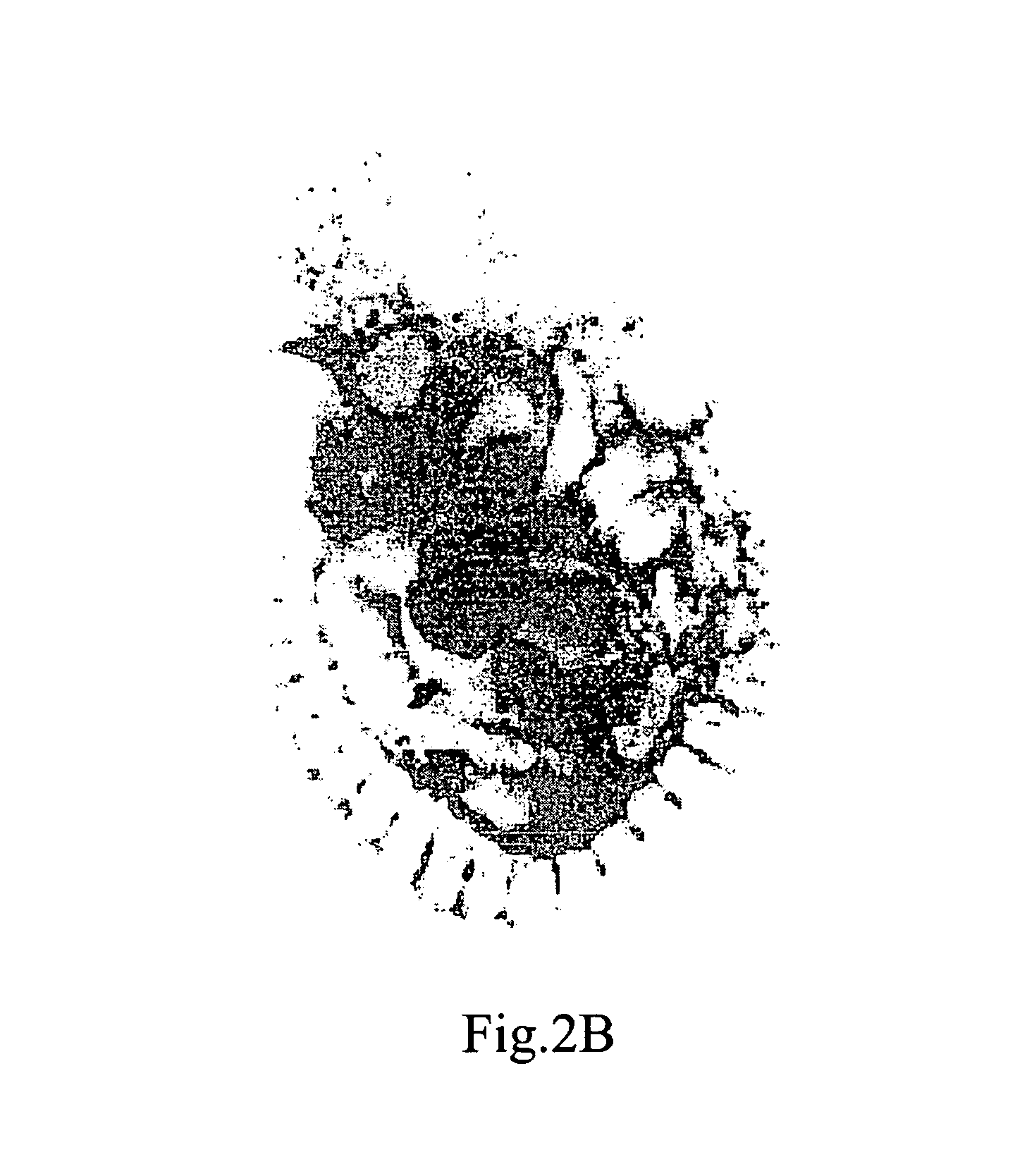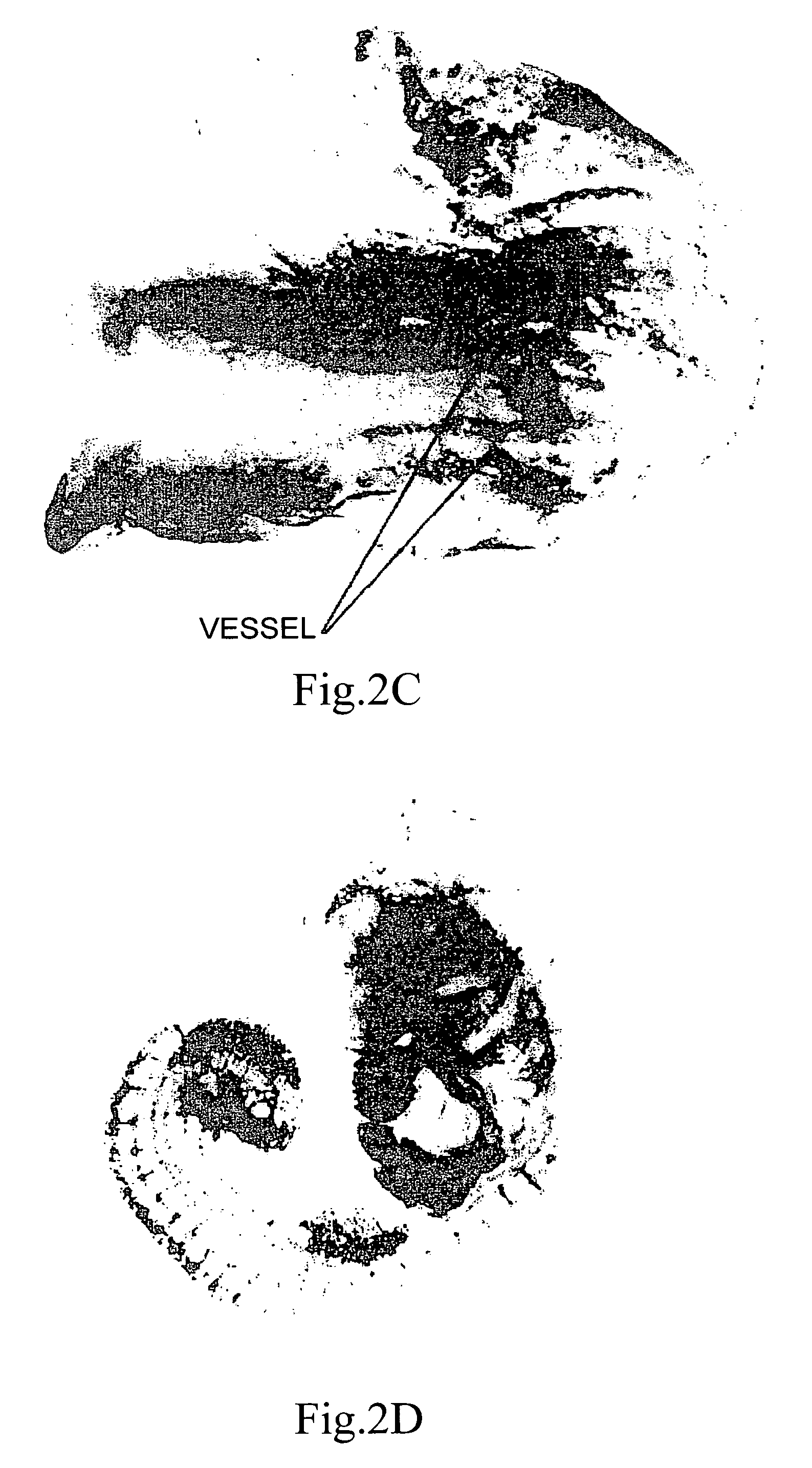Plexin family-like polypeptide, and uses thereof
a family-like polypeptide and polypeptide technology, applied in the field of dna and a gene, to achieve the effect of inhibiting angiogenesis, inhibiting normal vascular network construction, and inhibiting angiogenesis
- Summary
- Abstract
- Description
- Claims
- Application Information
AI Technical Summary
Benefits of technology
Problems solved by technology
Method used
Image
Examples
embodiment
[0122]In the following paragraphs, the invention will be described in detail with reference to several embodiments, however, the invention is not limited thereto. The various gene engineering procedures described in the embodiments were carried out according to a method described in Molecular cloning third. ed. (Cold Spring Harbor Lab. Press, 2001).
(1) Construction of cDNA Library Derived from Mouse Embryo Tail Bud
[0123]With use of an oligonucleotide: 5′-FgcGCACCACTTTGTACAAGAAAGCT GGGCGGCCGC (T)18-3′ (SEQ ID NO: 21 having attB1 site (F, g, c represent fluorescein group, phosphorothioate modified G residue, phosphorothioate modified C residue, respectively) as a primer, and mRNA derived from a mouse embryo tail bud (anterior segment mesoblast and segment mesoblast involved in S1, SO, S−1, and S−2 on the 11.5th day after ICR mouse fertilization) as a template, double strand cDNA was synthesized by Super Script II reverse transcriptase kit (Invitrogen Japan K. K.). An adapter having at...
PUM
| Property | Measurement | Unit |
|---|---|---|
| length | aaaaa | aaaaa |
| amino acid length | aaaaa | aaaaa |
| length | aaaaa | aaaaa |
Abstract
Description
Claims
Application Information
 Login to View More
Login to View More - R&D
- Intellectual Property
- Life Sciences
- Materials
- Tech Scout
- Unparalleled Data Quality
- Higher Quality Content
- 60% Fewer Hallucinations
Browse by: Latest US Patents, China's latest patents, Technical Efficacy Thesaurus, Application Domain, Technology Topic, Popular Technical Reports.
© 2025 PatSnap. All rights reserved.Legal|Privacy policy|Modern Slavery Act Transparency Statement|Sitemap|About US| Contact US: help@patsnap.com



